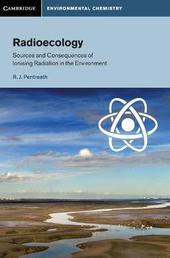
|
Radioecology: Sources and Consequences of Ionising Radiation in the Environment
Hardback
Main Details
| Title |
Radioecology: Sources and Consequences of Ionising Radiation in the Environment
|
| Authors and Contributors |
By (author) R. J. Pentreath
|
| Series | Cambridge Environmental Chemistry Series |
|---|
| Physical Properties |
| Format:Hardback | | Pages:300 | | Dimensions(mm): Height 251,Width 174 |
|
| Category/Genre | Applied ecology
Waste management
Conservation of the environment |
|---|
| ISBN/Barcode |
9781107096028
|
| Classifications | Dewey:577.277 |
|---|
| Audience | | Professional & Vocational | |
|---|
|
Publishing Details |
| Publisher |
Cambridge University Press
|
| Imprint |
Cambridge University Press
|
| Publication Date |
12 August 2021 |
| Publication Country |
United Kingdom
|
Description
Natural radiation arises from many sources, from the unstable atoms within our own bodies and in the materials around us, from the Sun, and even from beyond the Solar System. Additional sources include the legacy of testing nuclear weapons, nuclear waste, and nuclear accidents. All these sources have provided means of dating environmental materials and tracing the movements of substances through land, sea, and air. But ionising radiation also interacts with DNA, which has led to a remarkable range of studies to examine how and how quickly these unstable atoms are accumulated by both humans and biota, and their various effects on both. Providing an overview of the sources, uses and impacts of ionising radiation in the environment, and the frameworks developed to manage exposures to them, this is a valuable reference for graduate students and researchers interested in radioecology, environmental science and radiological protection.
Author Biography
R. J. Pentreath is an Emeritus Professor at the University of Reading, Emeritus Research Fellow of the Centre for Environment, Fisheries and Aquaculture Science (CEFAS); and a Research Fellow at the Plymouth Marine Laboratory. He is both a Chartered Biologist and a Chartered Radiological Protection Professional and has been elected Fellow of the Institute of Biology and of the Society of Radiological Protection. He began his career as a marine radiobiologist at the Fisheries Radiobiological Laboratory at Hamilton Dock, and went on to become the first Chief Scientist (and a Director) of the UK's Environment Agency. He is one of only a handful of Emeritus members of the Main Commission of the International Commission on Radiological Protection.
Reviews'Highly recommended.' J. F. Burkhart, Choice Magazine
|